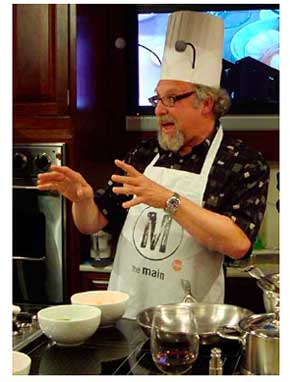
La página que intenta visitar sólo está disponible en inglés. ¡Disculpa!
The page you are about to visit is currently only available in English. Sorry!

 |
David George Gordon’s crusade to get people to eat bugs began in 1996. A professional science writer and former biologist, he was writing a book about cockroaches when he stumbled upon scientific papers explaining the medicinal properties of insects. Within days he had a contract for his next project, the Eat-A-Bug Cookbook, which came out in 1998. He’s been demonstrating how to perfect the meals—and explaining why insects are a valuable meat alternative—ever since.
“I like finding ways to inform people about the natural world in more than just a pamphlet,” he recently said in a phone interview, just days after he cooked bugs in New York City’s Times Square for the TV show Ripley’s Believe it or Not.
In addition to its recipes, the publication also includes a section on the environmental benefits of eating bugs: They’re bodies efficiently convert the food they eat into meat, and consuming them could reduce or even prevent pesticide use and decrease demand for more traditional foods like meat and fish, Gordon says.
In Japan rice farmers harvest grasshoppers in the fields, he said. They then sell them in cans and get two crops from the same field—both the rice and the bugs—without using harmful chemicals to eradicate the insects. “If we did a lot more handpicking of pests instead of spraying with pesticides, we’d avoid the tendency to poison ourselves,” he said.
Gordon is currently in the process of updating his book with dishes like tempura-fried tarantula and chocolate fondue with Mexican grasshoppers. To find out how you can make some of his dishes, including his signature plate, Orthopteran Orzo, named for the order of insects that comprises grasshoppers, crickets, and katydids, to name a few, read the recipes here. (We also included some recipes suggested by Iowa State University’s entomology club.) And if you have any of your own that you'd like to share, let us know!